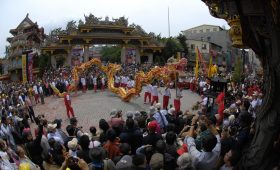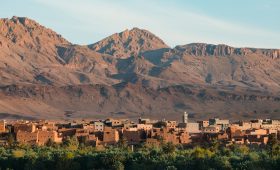Exploring Obo Natural Park
Obo Natural Park, also known as Parque Natural Ôbo, is a remarkable destination located in the southern part of São Tomé Island, part of the Democratic Republic of São Tomé and Príncipe. Covering approximately 235 square kilometers, it extends to include a section on the island of Príncipe, totaling around 300 square kilometers. This park is a haven for biodiversity and offers a unique experience for nature enthusiasts.
Why Visit Obo Natural Park?
- Biodiversity: The park is home to over 700 species of flora, including the evergreen coniferous Afrocarpus mannii and more than 100 types of orchids. It is also a birdwatcher’s paradise, with around 230 bird species. The forests here are considered the second most biologically important in Africa.
- Stunning Landscapes: Obo Natural Park features lush green forests, mangroves, swamps, and savannah grasslands. Visitors can explore cascading waterfalls and the striking Pico Cão Grande, a volcanic plug that rises dramatically from the forest.
- Cultural Significance: The park is not just about natural beauty; it also holds cultural importance. The village of Bombaim, overlooked by the nation’s tallest summit, Bom Successo, offers insights into local life and traditions.
Best Time to Visit
The optimal time to visit Obo Natural Park is during the dry season, from June to September. This period offers pleasant weather and lower chances of rain, making it ideal for outdoor activities and exploration.
How to Get There
Reaching Obo Natural Park requires some planning, but the journey is rewarding:
- By Air: Fly into São Tomé International Airport. From there, arrange transportation to the park by hiring a car or taking a taxi.
- By Sea: Alternatively, take a ferry or boat from São Tomé city to a nearby coastal town, then arrange local transportation to the park entrance.
Local Transportation
Once at Obo Natural Park, several transportation options are available:
- Hiking: The park offers a network of trails for exploring on foot. Wear comfortable shoes and bring water.
- Guided Tours: Hiring a local guide is recommended for insights into the park’s ecology and culture. Guides also enhance safety during your visit.
- Boat Rides: Explore parts of the park by boat to access secluded beaches and mangrove forests.
Obo Natural Park is a destination that combines natural beauty with cultural richness. While it requires some effort to reach, the experience of exploring its diverse ecosystems and learning about its cultural heritage is well worth the journey.




